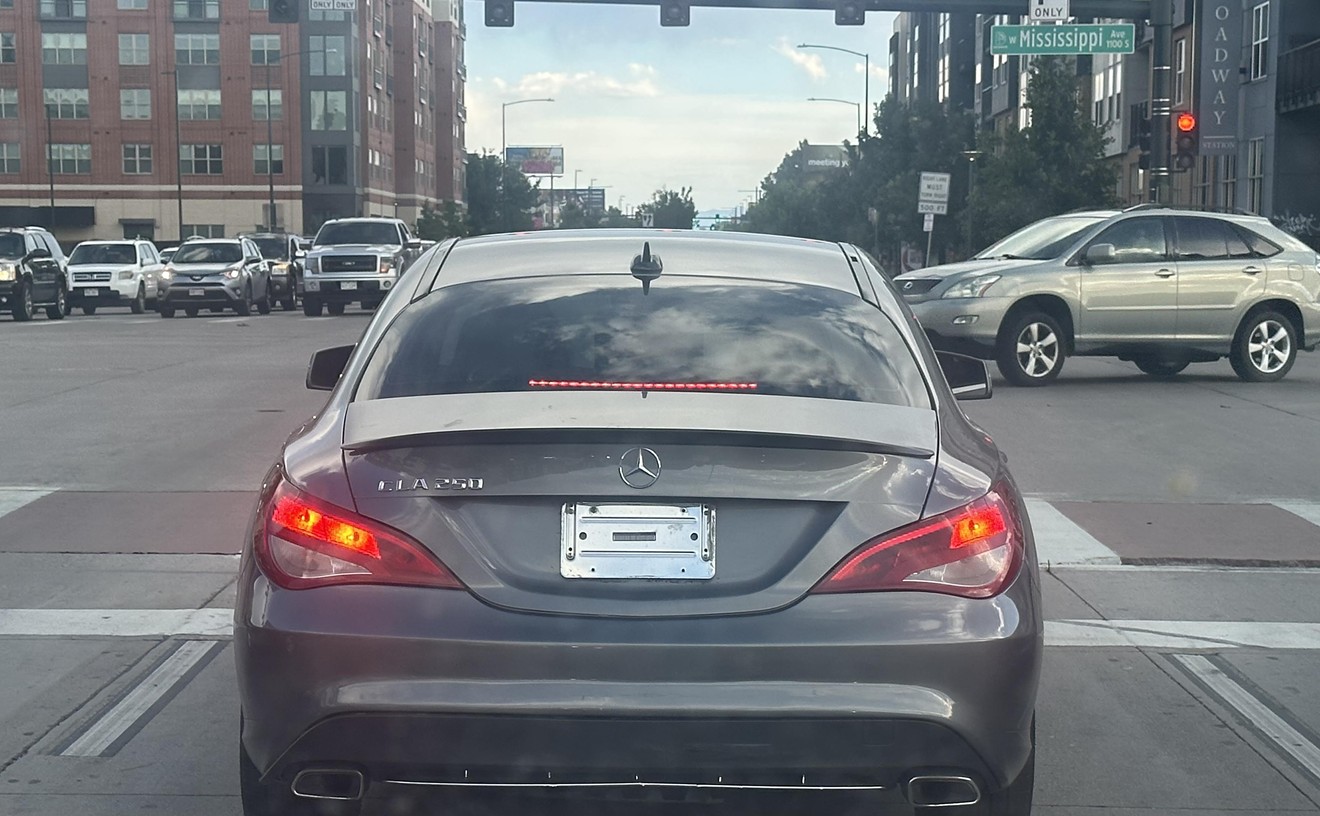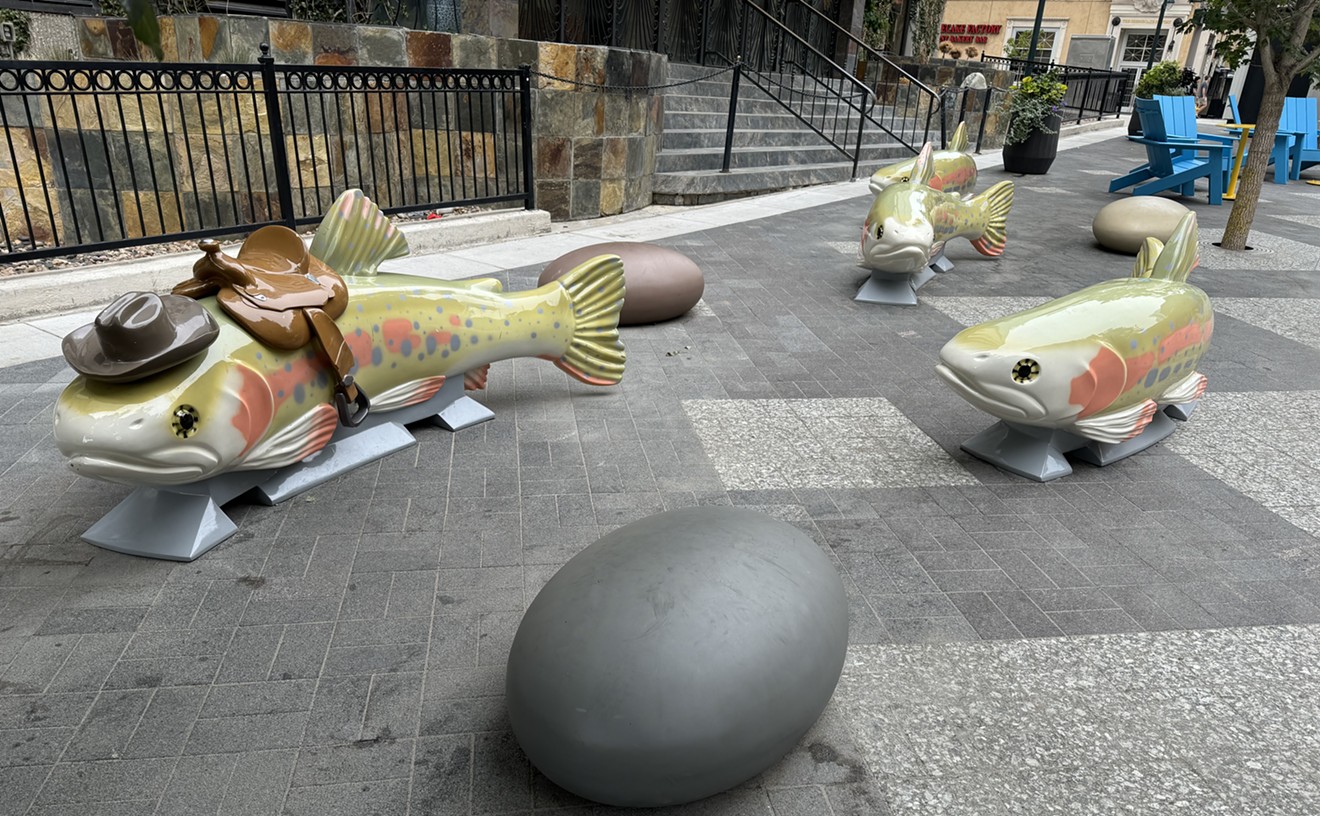Jovanina’s signs were cited in June and again in August. Confused, Linzinmeir reached out to the city — and learned that every other business on the 1500 block of Blake Street had also been written up for improper signage.
“Just so you are aware, I issued violation notices to your whole block of Blake St because almost every property has some sort of issue with their signs,” Lauren Gleason, a Landmark zoning inspector, wrote. “It’s not just you, and we want to work with everyone on bringing their properties into compliance.”
Also shared by businesses on the 1500 block of Blake Street this summer: construction closures. The north side of the street has been blocked for much of the time because of construction on the 16th Street Mall, which Linzinmeir says contributed to Jovanina’s losing about 30 percent of its business compared to previous years.
For him, the city closing much of the access to the block and then citing all the businesses for signage discrepancies shows a disconnect with reality.
“Are they missing the plot about what's going on in downtown Denver and how restaurants are suffering and closing?” he asks. “I’m just not sure why they're trying to extract these dollars from some of the hardest-hit, struggling businesses from the pandemic and in their downtown. I don't get it.”
He estimates that going through the permitting and redesign process for his signs will cost around $10,000 — a huge, unexpected expense in a bad year. He’s especially frustrated that his window signs were cited, since they were approved when Jovanina’s applied for its original permits.
“In the windows are very nice, elegant logos that we had designed and then put in these big plate-glass windows at the correct size per the code,” Linzinmeir says. “Very stylish, great-looking, and the right size based on the code. I know we do that stuff correctly, and I know our branding company does that correctly.”
If they were never acceptable, Linzinmeir wonders why the signs passed the permit process and were allowed for six years before he got a complaint. He's had problems with the city on other issues, including a short-term rental above the restaurant, and says officials told him that the relevant records in this case were lost; Community Planning & Development spokesperson Alexandra Foster denies that.
But Jovanina’s isn’t the only property on the block impacted by the sudden enforcement of signage rules. Foster confirms that CPD has four active cases, and Lexi Healy, who owns the “unholy trinity of bars” at 1526 Blake Street where Hell or High Water Tiki, Honor Farm and Samosa Shop operate, says her property was also cited.
“Despite multiple calls and emails, we were unable to reach anyone from the city to resolve the issue,” Healy says. “I’m pretty sure the problem is with our flag/banner. It seems like they want everyone on the block to have 3D signs like Hapa Sushi. It’s been a pretty frustrating situation.” Healy believes the Samosa Shop banner hanging in front of the building is what caught the city's attention, but she doesn't know why: As she looks around the neighborhood, she says she sees many similar banners.
The city needs to explain its rules more clearly, Healy adds.
Rules for Signs in Denver's Lower Downtown Historic District
According to Foster, CPD has responded to all of the inquiries it's received about signs. Signage rules are contained in the Denver Zoning Code; in the case of the 1500 block of Blake, Lower Downtown Historic District guidelines also apply, so signs must pass Landmark Design Review standards and be approved by Landmark Preservation staff. In the city's landmark districts, signs can’t be plastic, internally illuminated or vinyl unless a vinyl sign is affixed to a window.
The Lower Downtown Historic District guidelines state that every sign must have a purpose and can’t negatively impact character-defining features of a building or the historic architecture of a building. The guidelines also suggest identifying where signs may have been historically, and placing new signs in those locations.
“Consider what type and size of signage would best fit the architecture and scale of a historic building,” the guidelines say. “What signage would best relate to a building’s original vertical and horizontal patterns? Are the proposed signs made of high quality materials that correspond with the building and its surroundings? Appropriately placed and sized signage, crafted of durable materials, can reinforce the architecture of a historic building and its surroundings, and attract customers.”
The district doesn’t want too many signs that could lead to visual clutter and confuse customers, according to the guidelines. They recommend that a business consider the block it's on as a whole, and place signs at similar heights or locations to others. The guidelines also encourage graphic, visual interest for signs to give pedestrians a “sense of curiosity and delight.”
With window signs like Jovanina's, opaque or solid materials can’t account for more than 10 percent of the sign area to promote visibility.
“We do everything we can to work with property and business owners to provide options that will work for them within the rules and guidelines,” Foster says of the city process. “For historic properties, we also try to connect owners with resources like financial incentives for preservation, restoration and maintenance.”
According to Foster, CPD didn’t specifically target this block. Generally, inspectors respond to complaints and will give notice to other businesses nearby if they spot other violations, she adds.
“Sometimes business owners will see that neighbors have certain types of signs up that may not be allowed and either let inspectors know or follow suit and put up their own, similar signs,” Foster says. “In either case, our role doesn’t change. We educate them on the regulations and work with them to make sure all issues are addressed.”
On the 1500 block of Blake, no citations carrying fines have yet been issued — though Foster also says the city hasn’t received any applications for permits for new signs.
Foster adds that the signs Healy and Linzinmeir say they’ve been told the city prefers, like the little robot sign outside of Hapa, are called projecting signs, which jut out from buildings and offer imagery visible from the nearby right-of-way to promote pedestrian activity.
“In LoDo especially, we want these signs to be unique and to showcase the iconography of not just the city or the neighborhood, but of the businesses themselves,” Foster says. “This is one of the most walkable, most popular areas in the city and the region — the design guidelines and the work our Landmark Design Review planners do with property and business owners has helped set the stage for that. Our goal is to continue to nurture that ambience so that the local businesses located here can benefit.”
Before they benefit, however, they’ll have to shoulder the expense of creating such iconography and reapply for signs. Linzinmeir says that when Jovanina’s applied for its sign permits before the restaurant opened, the city suggested some sort of “big bowl of spaghetti” as a possible icon on a projecting sign.
“A big bowl of spaghetti doesn't really represent what we do as a restaurant, and I don't think that's really a great look for a 150-year-old historic building,” Linzinmeir says.
Instead, Jovanina's went with the window-signage option — which Linzinmeir insists the city approved with that now-lost paperwork. In order to attract customers, Linzinmeir added a temporary banner showing the name of the restaurant about three years ago.
According to the rules for temporary signs, they do not require a permit and are allowed for 45 days. Temporary signs also cannot have illumination, be attached to a wall or window, or have commercial advertising copy. Linzinmeir knew his sign had been up for too long, but he says he needed it to combat the challenges of first the pandemic, then the construction.
Especially when the street was closed, he felt the flag was important to let people know Jovanina’s is still here.
Linzinmeir wishes the city would acknowledge what a difficult time this has been for businesses in the area and work with them on solutions. When he proposed keeping up the temporary sign while he goes through the process of reapplying for signage, he says he was told it could not remain, even as a stopgap measure.
But Linzinmeir plans to leave up the flag anyway, saying he fears for his business without it.
“I'm going to lose more customers,” he worries. "I'm trying to keep 35 people employed."














